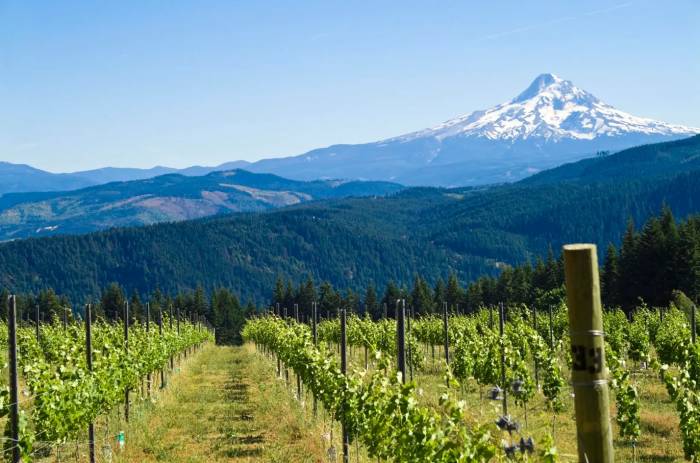California Wine Grape Crisis Leaves 38,000 Acres Uprooted as US Sales Drop 9 Percent
Oversupply and shifting consumer habits force growers nationwide to abandon vineyards and seek new crops amid industry uncertainty
2025-11-13

Across the United States, wine grape growers are facing one of the most difficult years in recent memory. In California, which produces nearly 90 percent of American wine, thousands of acres of grapes have been left unharvested or ripped out entirely. The same story is playing out in other major wine-producing states, including Oregon, Washington, Texas, New York, Virginia, Ohio and North Carolina. The cause is a sharp oversupply of wine grapes, driven by falling demand for wine and changing consumer habits.
Growers and industry leaders say the crisis has been building for several years. Wine sales in the U.S. began to flatten in 2018 after more than two decades of growth. The pandemic brought a brief surge in 2020 and 2021 as Americans drank more at home, but by the end of 2024, total U.S. wine sales had dropped by 9 percent. Wineries responded by canceling contracts with growers or refusing to buy grapes they had previously agreed to purchase.
Stuart Spencer, executive director of the Lodi Wine Grape Commission in California’s Central Valley, described the situation as “the worst market condition growers have seen in their lifetime.” He said even farmers in their eighties told him they had never experienced anything like this before.
The reasons for the downturn are complex. Americans are drinking less alcohol overall, especially younger consumers who are turning to alternatives like hard seltzer, hard tea and cannabis-infused beverages. Rising inflation has pushed up prices for wine and other goods. Anti-alcohol campaigns have gained traction. Tariffs and international competition have also played a role.
In Sonoma County, Karissa Kruse, president of the Sonoma County Winegrowers, estimated that about 30 percent of local grapes went unsold this year. In Napa Valley, some wineries walked away from contracts altogether. Similar stories are emerging from Oregon and Washington, where growers report difficulty selling their fruit despite a strong harvest season.
Texas grape growers faced an especially tough year in the High Plains region, where up to 60 percent of some varieties went unsold. Kirk Williams, a viticulture lecturer at Texas Tech University, said some growers have abandoned their vineyards or put them up for sale because they cannot afford to pull out the vines.
In New York’s Finger Lakes region and along Lake Erie in Ohio, growers estimate that about 20 to 30 percent of grapes were left without buyers this year. Some are letting the fruit fall to the ground to serve as compost. In Virginia, Matthew Brown of the Virginia Wine Coalition said that nearly half of growers reported being unable to sell grapes at some point in the past five years.
North Carolina’s smaller family-run wineries have been somewhat insulated by relying on direct-to-consumer sales and wine tourism, but even there, visitors are spending less per visit and inventories are rising.
To cope with the crisis, growers across the country are taking a range of actions. Many are pulling out unproductive or unsold vineyards to reduce supply and restore balance to the market. In California alone, more than 38,000 acres of vineyards were removed between October 2024 and August 2025 according to data from Land IQ and the California Association of Winegrape Growers.
Some growers are switching to other crops such as almonds or walnuts. Others are experimenting with new grape varieties that may be more resilient to climate change or better suited to changing consumer tastes. A few are producing bulk wine or grape juice for private label brands or non-alcoholic products.
Industry groups are also working on solutions. In Washington State, a new “Wine by the Glass” initiative aims to boost demand for local wines through expanded sales channels. In Napa Valley, a federal grant is funding educational programs to help growers strengthen their businesses.
Despite these efforts, many growers remain uncertain about when supply and demand will come back into balance. Jeff Bitter, president of Allied Grape Growers in California, estimated that at least 20 percent of California’s wine grape production was not harvested or crushed this year.
Jon Moramarco of The Gomberg Fredrikson Report believes there may be signs that the market is starting to stabilize as vineyard acreage shrinks and production falls closer to current demand levels. He estimates that if current trends continue—such as only 2.5 million tons crushed in California this year compared with nearly 3.7 million tons two years ago—the oversupply could ease soon.
But much depends on whether American consumers return to wine or continue shifting toward other beverages. Industry experts say innovation will be key—whether through new products that appeal to younger drinkers or creative uses for surplus grapes.
For now, many American vineyards remain in limbo as growers wait for signs that better times may be ahead.
Founded in 2007, Vinetur® is a registered trademark of VGSC S.L. with a long history in the wine industry.
VGSC, S.L. with VAT number B70255591 is a spanish company legally registered in the Commercial Register of the city of Santiago de Compostela, with registration number: Bulletin 181, Reference 356049 in Volume 13, Page 107, Section 6, Sheet 45028, Entry 2.
Email: [email protected]
Headquarters and offices located in Vilagarcia de Arousa, Spain.